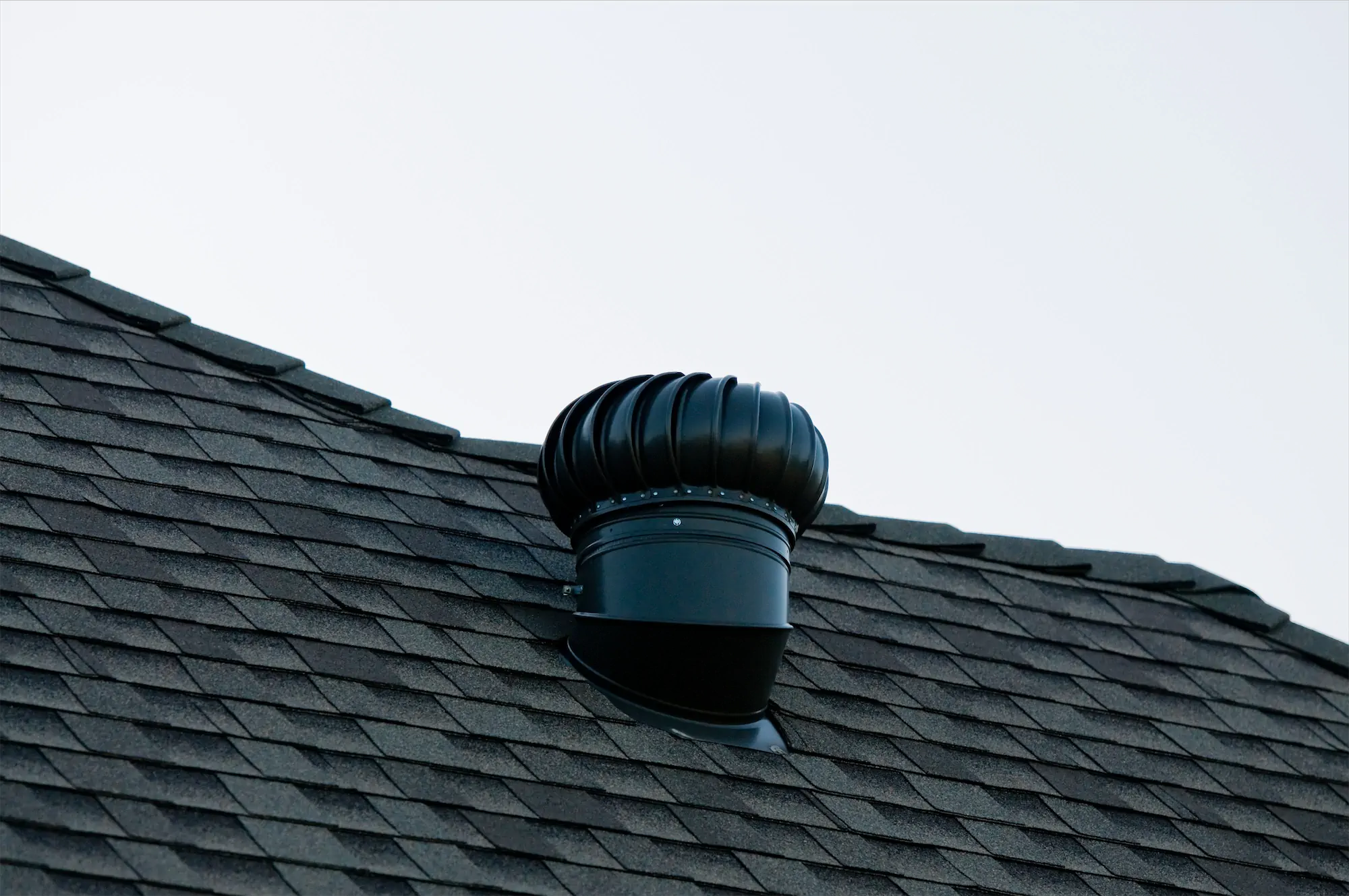Your attic is literally out-of-sight out-of-mind. So, in most cases homeowners are not aware of the importance of their attic ventilation and roof ventilation in preventing destroyers like mold, mildew and moisture buildup. Here’s why attic ventilation and roof vents are an essential part of your discussion when considering a new roof for your home.
What is roofing and attic ventilation?
Roofing and attic ventilation products provide controlled air movement in and out of your attic and work to reduce moisture inside, keeping your indoor space dry year-round. Ventilation products are categorized as either intake vents or exhaust vents, and there is a functional difference between these two types.
Intake Vents
The main function of intake vents is to bring cooler outside air into your home. This intake of cool air forces the warm air trapped inside to rise and flow out, which promotes healthy airflow, and helps keep your attic from getting hot, stuffy or moist.
Intake vents (also called soffit vents) are typically placed under the eaves of your roof and are evenly distributed along the surface to promote balanced airflow. If your roof does not have an exposed overhang or space along the eaves, roof vents are another available option, placed on top of the roof instead of underneath it.
Exhaust Vents
Working in tandem with intake vents, exhaust vents provide a way for the stuffy, hot air to escape from your attic through your roof.
Because hot air rises, these types of vents are typically placed on the roof, allowing air to be released upward. Most exhaust vents (also called ridge vents) are located on the highest point of your roof’s pitch and are the more common type of exhaust vents in the Mid-Atlantic. Other types of exhaust vents include static roof vents or roof louvers which are placed flat on the roof and evenly distributed near the roof ridge.
Attic fans
Another fairly common form of attic ventilation is an attic fan. These are typically located inside the attic to pull air from inside and vent to the outside. Large attic fans can not only help homeowners regulate airflow, but they can also help homeowners regulate their heating and cooling costs too.
Similar in concept to the attic fan is the roof turbine which uses the wind to turn blades drawing out hot, moist air from the attic.
Why is roofing and attic ventilation important?
Proper ventilation in your attic is important for a variety of reasons. Without airflow, moisture can build up in the space, resulting in mold, mildew and even structural damage. Common signs of ineffective ventilation are mold buildup, peeling paint, moisture on the walls, or stuffy, hot air.
The underside of your roof is usually entirely exposed to your attic, so these elements could cause damage directly to it. Moisture causes the structure of your roof to wilt and soften, making it less effective in protecting against the outside elements. Although a stuffy attic may not seem like a huge deal, it could lead to an array of bigger issues, including damage to the exposed underside of your roof and a shorted roof lifespan.
A balanced attic ventilation system will ensure that your attic is not only a comfortable space to live, but that your house stays structurally sound. Even if your home’s attic is just used for storage space or even vacant, it still directly impacts the roofing system. When replacing your roof, be sure to ask your contractor about ventilation options, and be prepared to discuss which type works best for your home. Ask a Thompson Creek professional about replacing your roof today, and get expert information about attic ventilation.


